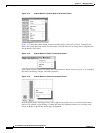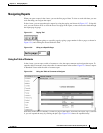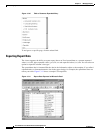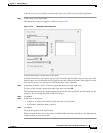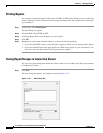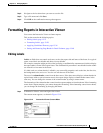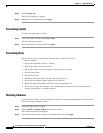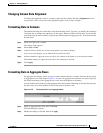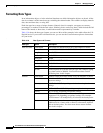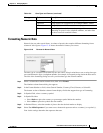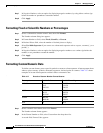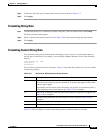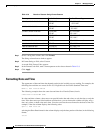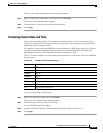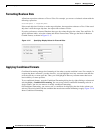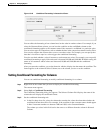
13-30
User Guide for Cisco Secure Access Control System 5.3
OL-24201-01
Chapter 13 Managing Reports
Formatting Reports in Interactive Viewer
Formatting Data Types
In an information object, as in the relational databases on which information objects are based, all the
data in a column is of the same data type, excluding the column header. The column can display numeric
data, date-and-time data, or string data.
Each data type has a range of unique formats. Numeric data, for example, can appear as currency,
percentages, or numbers with decimal values. Similarly, dates can be long dates, which include the full
name of the month, or short dates, in which the month is represented by a number.
Table 13-6 shows the data type formats you can use. Most of the examples in the table reflect the U.S.
English locale. If you work in a different locale, you can use the Custom format option to format data
for your locale
.
Table 13-6 Data Types and Formats
Data type Option Description
Date and Time Unformatted Data retains the default format set by the template or theme.
General Date June 5, 2006 12:00:00 AM GMT +00:00
Long Date June 5, 2006
Medium Date Jun 5, 2006
Short Date 6/5/06
Long Time 12:00:00 AM GMT +00:00
Medium Time 12:00:00 AM
Short Time 12:00
Custom Format depends on a format code you type. For example, typing
yyyy/mm results in 2006/10. You learn more about custom
formatting later in this chapter.
Number Unformatted Number retains the default format set by the template or theme.
General Number 6066.88 or 6067, depending on the decimal and thousands
separator settings
Currency $6,067.45 or ¥6067, depending on the locale and optional
settings
Fixed 6067 or 6,067 or 6067.45, depending on optional settings
Percent 45% or 45.8%, depending on optional settings
Scientific 2E04 or 2.67E04, where the number after the E represents the
exponent of 10, depending on optional settings. For example,
2.67E04 means 2.67 multiplied by 10 raised to the fourth power.
Custom Format depends on a format code you type. For example, typing
#,### results in a format with a comma as a thousands separator
and no decimal points. You learn more about custom formats
later in this chapter.



